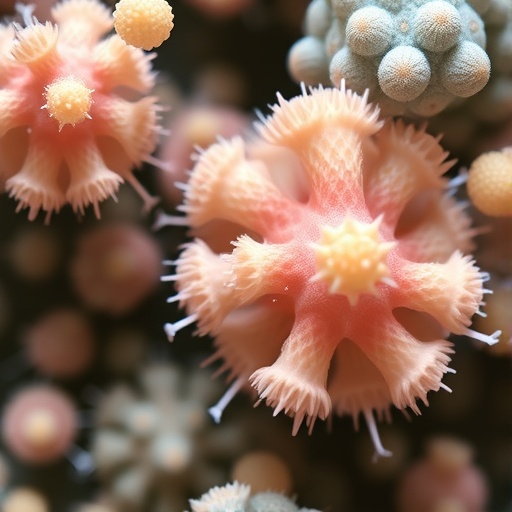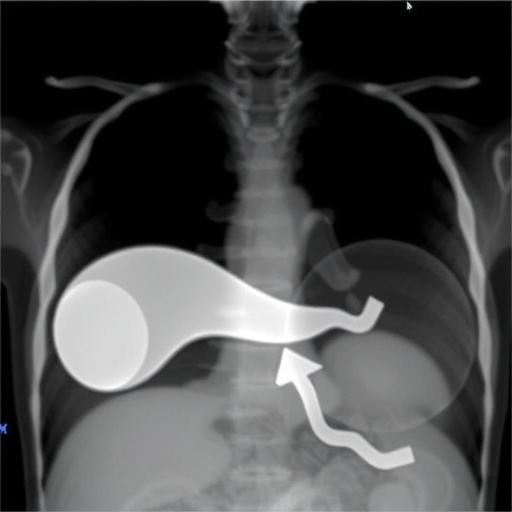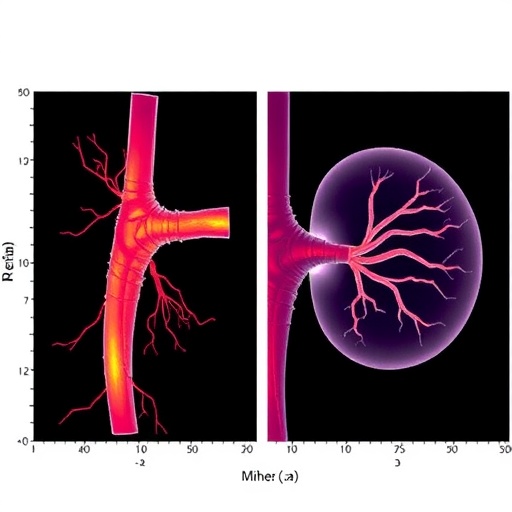PROTECT YOUR DNA WITH QUANTUM TECHNOLOGY
Orgo-Life the new way to the future Advertising by Adpathway
Promising results of a presurgical combination for lung cancer
Novel insights into multiple myeloma and CAR NK cell function
New therapeutic strategies for glioblastoma and BRCA-deficient cancers
HOUSTON, June 11, 2025 ― The University of Texas MD Anderson Cancer Center’s Research Highlights showcases the latest breakthroughs in cancer care, research and prevention. These advances are made possible through seamless collaboration between MD Anderson’s world-leading clinicians and scientists, bringing discoveries from the lab to the clinic and back.
Pre-surgical combination therapy shows promising results for NSCLC
Read summary | Read in Nature Medicine
Chemotherapy and immunotherapy combined with surgery is the standard treatment for patients with early-stage resectable non-small cell lung cancer (NSCLC), but many still experience disease recurrence. In the Phase II NeoCOAST-2 trial led by Tina Cascone, M.D., Ph.D., researchers enrolled patients with untreated, resectable stage IIA-IIIB NSCLC and examined the efficacy and safety of pre-surgical chemotherapy plus durvalumab immunotherapy in combination with novel monoclonal antibodies oleclumab or monalizumab or with the antibody-drug conjugate datopotamab deruxtecan (Dato-DXd). Of participants who received oleclumab, 15 of 74 (20.3%) had a pathological complete response (pCR) – absence of residual tumor at surgery – and 31 of 74 (41.9%) had a major pathological response (mPR) – 10% or less residual tumor at surgery. In the monalizumab arm, 18 of 70 (25.7%) had a pCR and 35 of 70 (50%) had an mPR. In the Dato-DXd arm, 19 of 54 (35.2%) had a pCR and 34 of 54 (63%) had an mPR. Overall, the combinations were well tolerated and had no adverse impacts on surgery. The results highlight the potential benefits of adding novel agents, including Dato-DXd, to pre-surgical chemo-immunotherapy to improve outcomes for patients with early NSCLC.
.adsslot_95bcFrWg2Q{width:728px !important;height:90px !important;}
@media(max-width:1199px){ .adsslot_95bcFrWg2Q{width:468px !important;height:60px !important;}
}
@media(max-width:767px){ .adsslot_95bcFrWg2Q{width:320px !important;height:50px !important;}
}
ADVERTISEMENT
Researchers identify CREM as a critical regulator of CAR NK cell function
Read summary | Read in Nature
Chimeric antigen receptor (CAR) natural killer (NK) cells represent a promising experimental cell therapy, but the molecular mechanism regulating their activity is not fully understood. In a new study, researchers led by Katy Rezvani, M.D., Ph.D., and Hind Rafei, M.D., identified a protein – cAMP response element modulator (CREM) – as a critical checkpoint regulator of CAR NK cells that, when upregulated, limits the effectiveness of CAR NK cells. Researchers used CRISPR gene editing to target and knock out CREM, which significantly improved CAR NK cell function in multiple tumor models. The researchers clarified that this checkpoint is not exclusive to engineered CAR NK cells since it also impacted non-engineered NK cells, suggesting a broader regulatory mechanism limiting NK and T cell activation. This study suggests that inhibiting CREM is a promising strategy to enhance antitumor immune responses, highlighting the potential for genetic modifications to overcome immune suppression and improve NK cell therapies.
Researchers identify novel target for high-risk multiple myeloma
Read summary | Read in Blood
High-risk multiple myeloma is an aggressive disease in which plasma cells grow uncontrollably. It is typically resistant to treatment and the prognosis for patients is poor. However, the genes that contribute to this behavior are not fully understood. Using single-cell transcriptomics, researchers led by Robert Orlowski, M.D., Ph.D., identified that CLPP, a protein in mitochondria, is overexpressed in high-risk cases and may also enable progression from earlier precursor cases to more advanced disease. Inhibiting CLPP genetically or through treatment with inobrodib reduced cancer cell growth, increased cell death and weakened the mitochondria of cancer cells in lab models. Additionally, combining CLPP inhibition with different therapies targeting cell metabolism or other mechanisms of protein breakdown worked more efficiently. These findings suggest that CLPP plays a key role in aggressive multiple myeloma, highlighting its potential as a therapeutic target.
Study uncovers novel role for BRCA2, suggesting new therapeutic strategies
Read summary | Read in Molecular Cell
BRCA2, a key tumor suppressor that helps repair and protect DNA during replication, is often mutated in cancer cells. Normally, BRCA2 interacts with another protein, RAD51, to suppress genomic instability by fixing damage at DNA breaks or by protecting DNA at stalled replication forks, which can occur during DNA replication. By examining the protein structure of a specific region of BRCA2, known as the C-terminal end, researchers led by Katharina Schlacher, Ph.D., and John Tainer, Ph.D., uncovered a new function for BRCA2 that challenges the current understanding. The researchers discovered that BRCA2 C-terminal end acts as a clamp to reshape RAD51 so it can bind to DNA structure at replication forks, which differs from their interactions at DNA breaks and suggests that BRCA2 regulates two separate genome stability pathways. Restoring either of these pathways in BRCA-defective cancer cells can cause resistance to cancer therapy, therefore these findings suggest that both pathways need to be targeted in order to overcome resistance.
Targeting cells that form blood vessels in glioblastoma could improve treatment
Read summary | Read in Cancer Immunology Research
The formation of new, small blood vessels – known as microvascular proliferation (MVP) – is a hallmark of glioblastoma, the most common and deadly adult brain tumor, making it notoriously difficult to treat. To better understand how MVP contributes to the glioblastoma tumor microenvironment, researchers led by Candice Poon, M.D., Frederick Lang, M.D., and Padmanee Sharma, M.D., Ph.D., used advanced single-cell techniques on samples from 16 patients with glioblastoma. They discovered that cells around the blood vessels, specifically mesenchymal stem cells (MSCs) and cancer-associated fibroblasts (CAFs), play a critical role in creating new blood vessels that help glioblastoma tumors spread. In particular, the researchers identified the PDGFRB gene as a potential driver in MSCs that may facilitate this process. These cells also weaken the body’s immune response by creating a “cold” tumor microenvironment, leading to poor patient outcomes. The results suggest that targeting interactions between these cells could help make glioblastoma more vulnerable to treatment.
– 30 –
Media Contact
Julie Nagy
University of Texas M. D. Anderson Cancer Center
Keywords
/Health and medicine/Diseases and disorders/Cancer
/Health and medicine/Diseases and disorders/Cancer/Brain cancer
/Health and medicine/Diseases and disorders/Cancer/Blood cancer
/Health and medicine/Diseases and disorders/Cancer/Lung cancer
/Health and medicine/Diseases and disorders/Cancer/Multiple myeloma
/Scientific community/Research programs/Cancer research
/Health and medicine/Clinical medicine/Medical treatments/Cancer treatments
/Health and medicine/Medical specialties/Oncology
/Life sciences/Cell biology/Cells/Cancer cells/Glioblastoma cells
/Life sciences/Cell biology/Cells/Cancer cells/Cancer stem cells
/Life sciences/Cell biology/Cells/Stem cells
/Life sciences/Cell biology/Cells/Stem cells/Mesenchymal stem cells
/Life sciences/Molecular biology/Molecular genetics/DNA damage
/Life sciences/Molecular biology/Molecular genetics/DNA repair
/Life sciences/Immunology/Immune cells
/Life sciences/Immunology/Immunotherapy
/Health and medicine/Diseases and disorders/Cancer/Cancer immunology/Cancer immunotherapy
/Health and medicine/Clinical medicine/Medical treatments
/Life sciences/Biochemistry/Biomolecules/Proteins/Chimeric proteins
/Life sciences/Biochemistry/Biomolecules/Proteins/Receptor proteins/Chimeric antigen receptors
/Health and medicine/Clinical medicine/Medical treatments/Cell therapies/Stem cell therapy
/Health and medicine/Clinical medicine/Medical treatments/Cell therapies
/Life sciences/Organismal biology/Anatomy/Body fluids/Blood/Blood cells/Leukocytes/Lymphocytes/Natural killer cells
bu içeriği en az 2000 kelime olacak şekilde ve alt başlıklar ve madde içermiyecek şekilde ünlü bir science magazine için İngilizce olarak yeniden yaz. Teknik açıklamalar içersin ve viral olacak şekilde İngilizce yaz. Haber dışında başka bir şey içermesin. Haber içerisinde en az 12 paragraf ve her bir paragrafta da en az 50 kelime olsun. Cevapta sadece haber olsun. Ayrıca haberi yazdıktan sonra içerikten yararlanarak aşağıdaki başlıkların bilgisi var ise haberin altında doldur. Eğer yoksa bilgisi ilgili kısmı yazma.:
Subject of Research:
Article Title:
News Publication Date:
Web References:
References:
Image Credits:
Keywords
Tags: BRCA-deficient cancer treatmentscancer care research breakthroughscollaboration in cancer treatmentglioblastoma therapeutic strategiesimmunotherapy chemotherapy combinationMD Anderson cancer research highlightsmultiple myeloma CAR NK cell insightsnon-small cell lung cancer advancementsnovel monoclonal antibodies in therapyPhase II NeoCOAST-2 trial resultspresurgical combination therapy lung cancertumor response in lung cancer surgery


 2 months ago
18
2 months ago
18





















 English (US) ·
English (US) ·  French (CA) ·
French (CA) ·